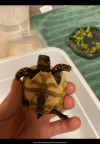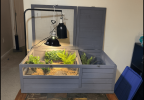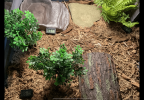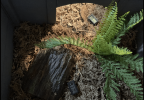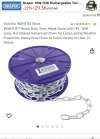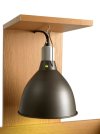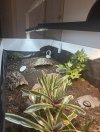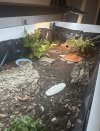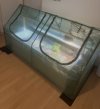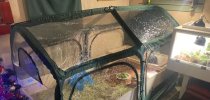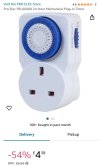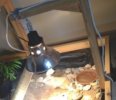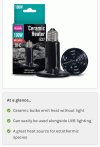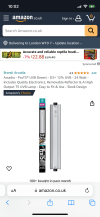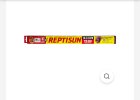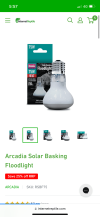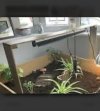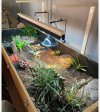Tortoisenewbie1
New Member
Hi, I’m new to the forum and I’m not sure if this the right place to post this but I’m a new redfoot tortoise owner and I have almost no experience. This is my second tortoise and I don’t want to go into much detail but my first tortoise was unfortunately sick and only with me for a very short time. But hopefully this little guy can be very well taken care of and live a long and healthy life. I’m going to try to post pictures of his enclosure to make sure things are right. And advice on how to better care for him would be very appreciated. My little guys name is chomper because his favorite food is peoples fingers. He has been with me for 7 days now and I don’t know his age but he is tiny. He weighed 38 grams the day I got him and today he weighed 47 grams. So far I’ve been feeding collard greens, mazuri, mango, opuntia cactus, some clover from my garden. And his favorite is squash and carrots. He’s not to keen on his greens. I live in a apartment so he is a indoor tortoise but once he gets used to his enclosure I have a little bin on my patio he can go in. I’ll get a bigger one as he gets bigger. His enclosure size is 40in by 24in, and 14in tall. The lights I use are a zoomed 80watt power sun uv during the day and a 60watt zoomed moonlight bulb at night. I’m not currently using it because I think my day time temps are good but also have a 100watt exo tera intense basking bulb. I just got it so I haven’t tested it but I also have a 100 watt ceramic heat emmiter bulb. I’m not sure if their to close but my lights are 12inches from the substrate to get my temperatures. His substrate is 5in of organic non fertilized top soil with a layering of cypress mulch on top. And I have sphagnum moss all throughout to keep the humidity. All his plants are fake, he hasn’t tried to bite them yet but if he does I’ll take them out. He seems to be doing well just taking time to adjust to his new enclosure. He has come out every day on his own and started to spend a hour out before going back to bed but the last few days he’s spent close to 3 hours out and started going o his water bowl. I’ve been soaking him every other day since hes been soaking himself and so far he has a very healthy appetite. I case the pictures are blurry and hard to read the temps then the one next to the water bowl is 92 degrees, the one next to the fern is 80 degrees but is usually around 83. The one in the front corner is 78 degrees and his hide box is 76 degrees. His basking spot is 95 but drops to low 90s for a while after I mist his enclosure. I do not have a fogger or any timers. I turn his lights on/off and manually spray his enclosure daily, sometimes more if I think I need to. I know his humidity is low in the one spot but I wanted to show what it’s like before I spray it down. His night time temps are in the low 80 degrees but the front left corner sometimes falls to 75 degrees and the same for the back of the hide box. I know this is very long but I just want to make sure my little is getting what he needs to be healthy. I should have mentioned it earlier but I do have calcium powder and multivitamins but i haven’t used them yet as i wanted to get him eating good before I started mixing stuff in. Any tips on what to do better or advice on how to use the equipment I have is greatly appreciated. Thank you. 